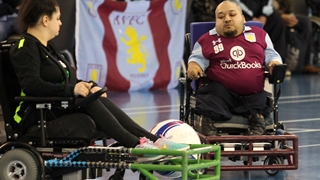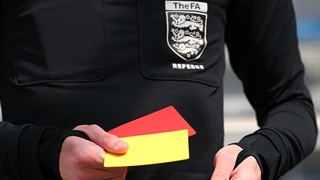
The FA provides a range of opportunities to support and offer advice for those clubs and leagues seeking to develop and improve their own facilities.
In line with The FA vision for facilities to ‘build, protect and enhance the game’ the facilities team has developed the resources below to help clubs and voluntary organisations better understand the processes and requirements for developing quality sports facilities.
Included are the most current standards for facilities, covering everything from artificial and grass pitches to goalpost safety and ground grading.
Developing facilities
The successful delivery of a facilities project relies on a good project brief with clear aims and objectives from the outset.
There are several distinct phases to the project life-cycle, some of which require professional input. Key areas should be discussed by the club in order to facilitate the optimal delivery of their facilities in line with the organisation’s requirements and budget.
There are eight stages to a typical facility development project.
Stage one is the project inception and considers the client’s organisation, strategic need and justification, appointment of a project team, scoping project requirements and project programme.
Stage two covers the feasibility study looking at technical issues, outline plans, planning considerations and budget costings.
Stage three is the outline proposal. At this stage the club can review schematic layouts and proposals for their project based on the development of earlier stages. Decisions as to building configuration and operational flow of the building need to be made. Also orientation to optimise access to pitches and to accommodate spatial requirements such as car parking are to be evaluated.
Stage four covers the scheme design ascertaining the final appearance of the building for planning purposes.
Stage five considers procurement. This stage can often be the most contentious and choosing the correct procurement route is vital in ensuring successful delivery of your project.
Stage six is the construction phase. The project team, architect and quantity surveyor will take control of the construction phase. There will be regular meetings to discuss progress throughout the contract and to deal with any issues that may arise requiring the client’s input.
Stage seven is completion, when the project the facility will be handed over to the client.
Stage eight is the maintenance and management and is an important phase of the project life-cycle as it helps to retain the quality of the building. In the earlier design stages decisions are taken as to internal finishes, which have a bearing on the ease of maintenance and may well reduce refurbishment costs.
The generic process for facility development download has been prepared to help sports clubs and voluntary organisations to understand the processes and requirements for procuring quality provision for sports facilities. It highlights various stages of the process and the key stakeholders involved. Assistance is available from both The Football Association and the Football Foundation throughout the development stages of your project and these are referred to within the various stages of the process.
Guidance on artificial grass pitches
The emergence of artificial grass pitches (AGPs) and in particular the third generation surface has impacted significantly on the way football is played and delivered throughout the country. AGPs offer a quality playing surface throughout the year, allowing for increased opportunities for training and match competition at all levels and ages. In a wider context and when delivered against a strategic setting such as a school site, they enhance curricular activity and provide quality playing opportunities for the wider community.
Floodlighting
Floodlighting is a key requirement for clubs in the National League System and also essential on AGP pitches to ensure wider community use in the evenings which in turn helps to generate revenue and underpin the business plan.
Click here for floodlighting guidance
Goal post safety
The FA's guidelines for the safe use of goalposts
The FA, along with the Department for Culture, Media and Sport, the Health and Safety Executive and the British Standards Institution, would like to draw your attention to the following guidelines for the safe use of goalposts.
Click here to watch a special video from UEFA on goalpost safety.
Too many serious injuries and fatalities have occurred in recent years as a result of unsafe or incorrect use of goalposts.
Safety is always of paramount importance and everyone in football must play their part to prevent similar incidents occurring in the future:
For safety reasons goalposts of any size (including those which are portable and not installed permanently at a pitch or practice field) must always be anchored securely to the ground.
- Portable goalposts must be secured as per the manufacturer’s instructions
- Under no circumstances should children or adults be allowed to climb on, swing or play with the structure of the goalposts
- Particular attention is drawn to the fact that if not properly assembled and secured, portable goalposts may overturn
- Regular inspections of goalposts must be carried out to check that they are properly maintained
- Portable goalposts should not be left in place after use. They should be dismantled and removed to a place of secure storage
- The use of metal cup hooks on goals was banned from the commencement of 2007-08 season and match officials have been instructed not to commence matches where such net fixings are evident for safety reasons. Nets should only be secured by plastic hooks, net grips or tape and not by metal cup hooks. Any metal cup hooks should have been removed and replaced. New goalposts should not be purchased if they include metal cup hooks
- Goalposts which are “homemade” or which have been altered from their original size or construction should not be used. These have been the cause of a number of deaths and injuries
There is no BS/CEN standard for wooden goals and it is unlikely that wooden goals will pass a load or stability test. The FA recommends that wooden goals should be replaced when necessary with compliant metal, aluminium or plastic goalposts. All wooden goals previously tested by independent consultants have failed strength and stability tests.
For reference, you should note that The FA and BSI, in conjunction with the industry, have developed two standards for goalposts – BSEN 748 (2004) and BS 8462 (2005). It is strongly recommended that you ensure that all goals purchased comply with the relevant standard. A Code of Practice BS 8461 has also been completed and copies of all of these three standards are available from the British Standards Institute.
Funding for replacement goals is available via the Football Foundation and eligibility criteria and further details can be obtained on their web site – www.footballfoundation.org.uk
Further technical standards
The FA is responsible for the development of the National Game. Part of this responsibility is to lead the establishment of simple to understand, free-to-access technical standards relating to all facility types – from pitch dimensions to goal sizes – for current and future formats of the game.
Below you will find the latest standards for facilities covering everything from pitch dimensions to goal sizes. These reflect the different needs and aspirations of football at all levels within the national game and will be regularly maintained, updated and communicated across the grassroots game.









